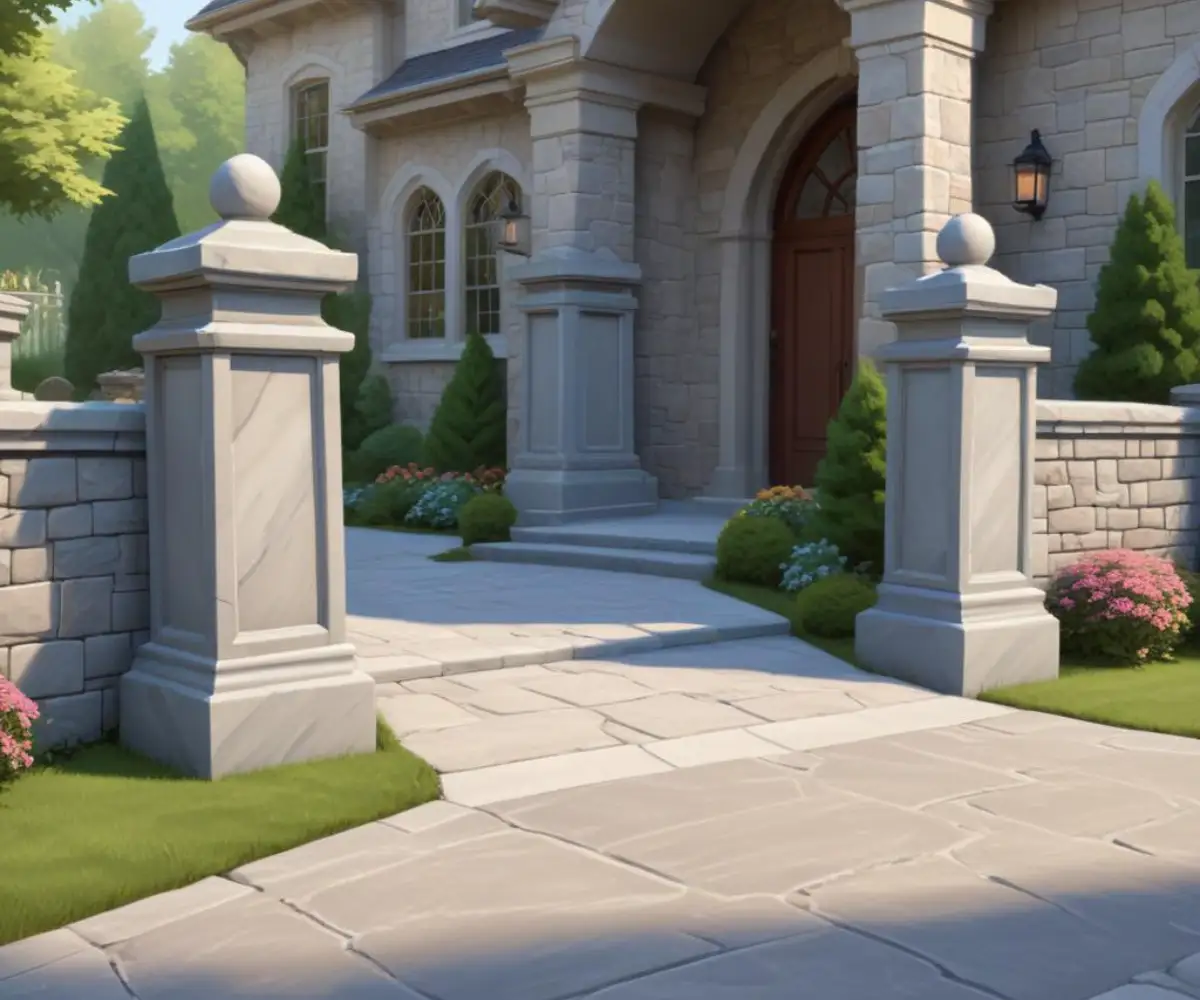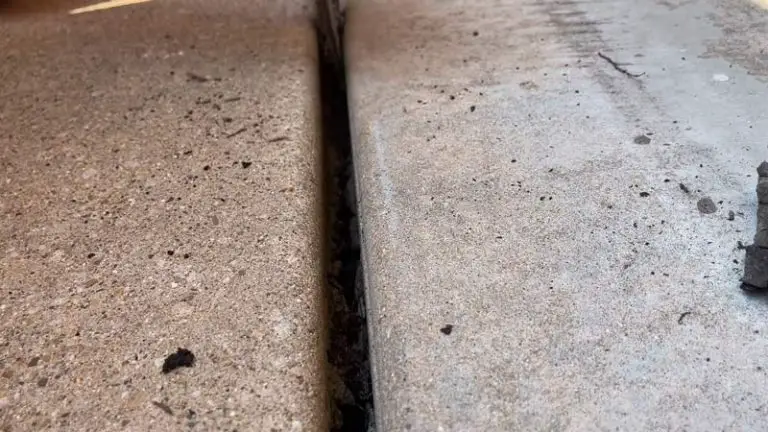Driveway Pillar Costs Exposed: Don’t Build Until You Read This
A grand entrance can transform your property’s entire aesthetic. Stately driveway pillars offer a powerful statement of elegance, security, and curb appeal. However, this dream addition comes with a common nightmare: a completely unknown price tag.
The number one problem homeowners face is the vast and confusing range of potential costs. Without understanding the key variables, you risk starting a project you can’t afford to finish, or worse, cutting corners that lead to structural failure.
This guide breaks down every factor, from materials to hidden fees, so you can build with confidence and a solid budget.
You'll Learn About
Why Guessing Your Budget Is a Recipe for Disaster
Underestimating the cost of driveway pillars is more than just a financial inconvenience. It can lead to a half-finished eyesore at the end of your driveway or force you to use subpar materials that crack and crumble within a few years.
A well-planned budget, based on a clear understanding of the components involved, is the foundation of a successful project. It ensures you get the quality and look you desire without any costly surprises along the way.
The Core Factors That Dictate Your Final Bill
The final invoice for your driveway pillars is a sum of several critical parts. Each choice you make, from the type of stone to the complexity of the design, will have a direct impact on the bottom line. Let’s explore these essential cost drivers in detail.
Material Matters Most: From Classic Brick to Natural Stone
The material you choose is arguably the most significant factor influencing the total cost. It affects not only the price of the materials themselves but also the labor required for installation. Some materials are heavier, harder to work with, and require more specialized skills.
Classic Brick: A timeless and popular choice, brick offers durability and a traditional look at a relatively moderate price point. It’s versatile and can match many home styles.
Stone Veneer: This provides the look of natural stone without the immense weight and cost. Thin slices of real or manufactured stone are applied over a concrete block core.
Natural Stone: For the ultimate in luxury and durability, nothing beats natural stone like granite, limestone, or fieldstone. This is the most expensive option due to material cost and the intensive labor required.
Poured Concrete & Cinder Block: These are the most budget-friendly structural options. They are often finished with stucco, paint, or a veneer to improve their appearance.
Wood: While less common for their structural permanence, large timber pillars can create a stunning rustic look, especially for country homes or ranches. They require more maintenance to protect against rot and pests.
Size and Design Complexity: It’s Not Just About Height
A simple, four-foot-tall square pillar will cost significantly less than an eight-foot-tall tapered column with intricate inlays. The bigger and more complex the design, the more you will pay for both materials and the skilled labor needed to execute the vision.
Consider how elements like curves, multiple materials, or built-in features will increase the hours a skilled mason needs to spend on the project. Every cut, every course, and every detail adds to the final cost.

Labor and Professional Installation: The Biggest Wildcard
Labor can easily account for 50% or more of your total project cost. This isn’t just about stacking bricks; it’s a multi-stage process that requires expertise. The project involves excavation, pouring concrete footings, skilled masonry work, and finishing touches.
Hiring a specialized masonry contractor will likely cost more per hour than a general handyman, but their expertise is invaluable. They understand how to build a structure that will withstand the elements and last for decades without leaning or cracking.
Foundation and Footings: The Critical Unseen Expense
What you don’t see is just as important as what you do. Every pillar needs a solid concrete footing that extends below the frost line. Skipping or skimping on the foundation is the single biggest mistake you can make.
A weak foundation will cause the pillars to shift, lean, and crack over time, ruining your investment. The cost of the footing depends on the size of the pillar, your local climate (frost line depth), and soil conditions. It’s a non-negotiable expense for a lasting installation.
The Finishing Touches: Caps, Lighting, and Gates
The basic pillar structure is only the beginning. The features you add will complete the look but also increase the cost. These are often budgeted separately but are essential to consider from the start.
Pillar Caps: Pre-cast concrete or cut stone caps provide a finished look and protect the pillar from water damage.
Lighting: Integrating lighting requires running electrical conduits during construction and hiring an electrician, adding a significant cost.
Gates: If you plan to hang gates, the pillars must be engineered to handle the weight and stress. The cost of the gates themselves, plus automation hardware, can often exceed the cost of the pillars.
Breaking Down the Numbers: A Realistic Cost Analysis
While a precise quote requires a site visit from a contractor, we can provide a realistic breakdown of expected costs. This table illustrates the potential range for a pair of professionally installed driveway pillars based on common material choices.
| Pillar Type / Material | Avg. Material Cost (Per Pair) | Avg. Labor & Foundation Cost (Per Pair) | Estimated Total Cost (Per Pair) |
|---|---|---|---|
| Basic Cinder Block (Stucco Finish) | $600 – $1,200 | $1,500 – $3,000 | $2,100 – $4,200 |
| Standard Brick | $1,000 – $2,500 | $2,000 – $4,500 | $3,000 – $7,000 |
| Manufactured Stone Veneer | $1,500 – $3,500 | $2,500 – $5,500 | $4,000 – $9,000 |
| High-End Natural Stone | $4,000 – $10,000+ | $4,000 – $8,000+ | $8,000 – $18,000+ |
DIY vs. Hiring a Pro: The Ultimate Cost-Saving Question
When you see the labor costs, the temptation to build the pillars yourself is understandable. For a homeowner with significant masonry experience, it might be a viable option. For most, however, it’s a risky gamble.
The Allure of DIY: Can You Really Save Money?
The main appeal of a DIY build is saving thousands on labor. However, you must honestly assess your skills. This project requires knowledge of concrete mixing, mortar application, ensuring structures are plumb and level, and understanding local building codes.
Mistakes can be incredibly costly to fix. An improperly built pillar may need to be torn down and rebuilt entirely, erasing any potential savings. Remember, this is a permanent, highly visible feature of your home.
When to Call in the Experts: A Smart Investment
For a project of this scale and importance, hiring a professional mason is a wise investment. They bring the experience, tools, and efficiency to get the job done right the first time. A pro ensures the structure is safe, durable, and aesthetically pleasing.
When vetting contractors, always get at least three written quotes. Check their references, look at a portfolio of their previous work, and ensure they are licensed and insured. This due diligence protects you and your investment.
Beyond the Build: Hidden Costs You MUST Plan For
The quotes you receive will cover the pillars themselves, but there are other expenses that can catch homeowners by surprise. Factoring these into your budget from the start will prevent financial stress later.
Building Permits: Many municipalities require a permit for structures of a certain height. Check with your local building department to understand the requirements and fees.
Site Preparation: The area may need to be cleared and leveled. If there are obstructions like roots or old concrete, the cost of removal will be extra.
Debris Removal: Construction creates a lot of waste, from excavated dirt to material scraps. Your quote may or may not include the cost of hauling this away.
Landscaping Repair: The construction process can be tough on your lawn and garden. Budget for some minor landscaping work to repair any damage around the new pillars.
Integrating Smart Features: A Modern Upgrade
In today’s connected world, a driveway pillar can be more than just a structural element. Planning for technology integration during the build phase is far more cost-effective than retrofitting later. This is a detail few consider upfront but adds immense value.
Consider running extra conduit for future-proofing. You can easily add smart security cameras, video intercom systems, or automated gate controls that operate from your smartphone. These features enhance your home’s security and convenience, providing a modern touch that increases property value.
Getting the Most Value: Smart Tips to Manage Your Budget
Building beautiful driveway pillars doesn’t have to break the bank. With smart planning, you can achieve a high-end look while keeping costs under control. It’s about making strategic choices.
First, always get multiple, detailed quotes from reputable contractors. This allows you to compare not just the price but the scope of work included. Second, consider using a high-quality manufactured stone veneer instead of solid natural stone. It can provide a nearly identical look for a fraction of the cost.
You can also control costs by opting for a simpler, classic design over something ornate and complex. Finally, consider phasing the project. You could build the pillars now and add expensive lighting or automated gates in a year or two as the budget allows. A major project like this can sometimes cause disruptions, and you might even need to consider a temporary bathroom during renovation if other large-scale home improvements are happening simultaneously.
Thinking about long-term maintenance is also key. For instance, ensuring outdoor equipment is properly cared for, like knowing the details of your Ariens 7524 snowblower, is part of a holistic approach to property upkeep. Understanding your equipment, right down to what a Toro OHAE meaning might be on a mower, saves you from unexpected costs down the line, freeing up budget for improvements like pillars.
Your Grand Entrance Awaits
The cost to build driveway pillars is a complex equation with many variables. By understanding the impact of materials, labor, design, and finishing touches, you can move from a vague idea to an actionable plan.
Don’t let an unknown budget hold you back. Use this guide to plan meticulously, hire the right professionals, and make smart choices. Your investment will reward you with a stunning entrance that adds value and pride to your home for years to come.

